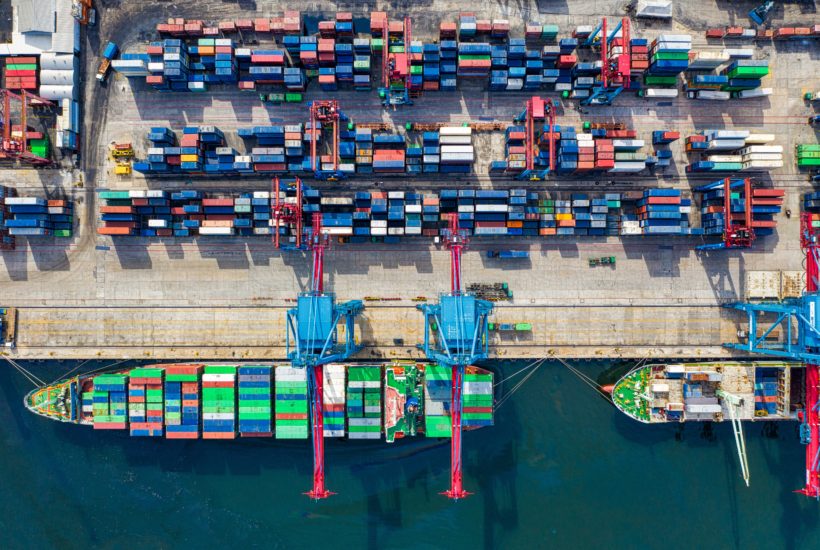Africa
The trade between Morocco and the rest of Africa is on the rise since 2009
Trade between Morocco and the rest of Africa grew at an average annual rate of 6.1 percent between 2009 and 2019. Export growth was higher than import growth.In detail, Morocco’s exports to Africa, by sector, are not limited to food products, says the review, which notes that other products constitute the national export offer, including sales of products of the chemical industry.

Trade between Morocco and the rest of the African continent is doing well. That is confirmed by the 66th issue of Al Maliya magazine, published every four months by the Ministry of Economy, Finance, and Administrative Reform. Trade transactions between Morocco and the rest of Africa increased by 6.1 percent for the 2009-2019 period. Based on data from the Exchange Office, the document highlights that the share of this trade in Morocco’s overall trade volume is 5.1 percent in 2019.
According to the same source, during this period, trade was marked by a structural change as of 2015, the year from which Morocco’s trade balance became in surplus.
Read more details about the trade between Morocco and the rest of the African continent and find the most important economic news with the Born2Invest mobile app.
This result is due to a higher increase in exports than in imports
Thus, sales of goods to Africa have almost tripled over the last ten years to reach $2.43 million (21.6 MMDH) in 2019, while imports amounted to $2 million (17.9 MMDH) compared to $1.54 million (13.7 MMDH) in 2009. As for the trade balance of this trade, it recorded a surplus in favor of Morocco, standing at $410,000 (3.7 MMDH) in 2019 against a deficit of $610,000 (5.5 MMDH) recorded in 2009, the document notes. The coverage rate also improved by 60.6 points to 120.8% in 2019, reaching its highest level in 2017 with 145.6%.
The review also indicates that Moroccan exports to Africa have recorded an average annual growth rate of 10% over the last decade. These sales are characterized by a diversification of destination markets and exported products. In addition, analysis of Morocco’s main customers on the African continent shows a diversification of destination markets for Moroccan exports.
“In 2019, Djibouti and Senegal are the first customers of the kingdom in the African continent with a value of $230,000 (2.1 MMDH) each followed by Mauritania $210,000 (1.9 MMDH), Côte d’Ivoire $202,000 (1.8 MMDH) and Algeria $168,000 (1.5 MMDH),” according to data from Al Maliya. In 2019, Moroccan exports to these countries accounted for 43.5% of Morocco’s overall export volume to Africa.
In detail, Morocco’s exports to Africa, by sector, are not limited to food products, says the review, which notes that other products constitute the national export offer, including sales of products of the chemical industry (up to 30, 1% of total exports in 2019) and those of agriculture, forestry, hunting (up to 3.2%), to the detriment of exports of food industry products (down to 25.1%), automotive industry (down to 4.1%) and metallurgy (down to 2.1%). Concerning imports, these have recorded an average annual growth rate of 2.7% between 2009 and 2019. Thus, Egypt is Morocco’s leading supplier at the continental level with 36.2% of total imports from Africa, followed by Algeria with 27.6% and Tunisia with 13.2%. These three countries alone account for 77% of the total.
By sector, the structure of imports from Africa in 2019 is increasingly diversified. “Several sectors have begun to gain weight such as the manufacture of other non-metallic mineral products (4.5% in 2019 against only 2% in 2009). Imports of coal mining, lignite, peat declined to 16.2% in 2019 and the refining of oil and other energy products to 22.4%,” notes the magazine. In addition, it should be recalled that trade between Morocco and the rest of Africa has experienced remarkable growth in recent years. They recorded an average increase of 5% between 2007 and 2017. They reached $1.3 million (11.7 MMDH) in 2010 against $404,000 (3.6 MMDH) in 2000, three times more in a decade.
__
(Featured image by Tom Fisk via Pexels)
DISCLAIMER: This article was written by a third party contributor and does not reflect the opinion of Born2Invest, its management, staff or its associates. Please review our disclaimer for more information.
This article may include forward-looking statements. These forward-looking statements generally are identified by the words “believe,” “project,” “estimate,” “become,” “plan,” “will,” and similar expressions. These forward-looking statements involve known and unknown risks as well as uncertainties, including those discussed in the following cautionary statements and elsewhere in this article and on this site. Although the Company may believe that its expectations are based on reasonable assumptions, the actual results that the Company may achieve may differ materially from any forward-looking statements, which reflect the opinions of the management of the Company only as of the date hereof. Additionally, please make sure to read these important disclosures.
First published in LesEco.ma, a third-party contributor translated and adapted the article from the original. In case of discrepancy, the original will prevail.
Although we made reasonable efforts to provide accurate translations, some parts may be incorrect. Born2Invest assumes no responsibility for errors, omissions or ambiguities in the translations provided on this website. Any person or entity relying on translated content does so at their own risk. Born2Invest is not responsible for losses caused by such reliance on the accuracy or reliability of translated information. If you wish to report an error or inaccuracy in the translation, we encourage you to contact us.

-

 Cannabis2 weeks ago
Cannabis2 weeks agoCannabis Clubs Approved in Hesse as Youth Interest in Cannabis Declines
-

 Business1 day ago
Business1 day agoThe Dow Jones Teeters Near All-Time High as Market Risks Mount
-

 Crowdfunding1 week ago
Crowdfunding1 week agoWorld4All, a Startup that Makes Tourism Accessible, Surpasses Minimum Goal in Its Crowdfunding Round
-

 Crypto5 days ago
Crypto5 days agoThe Crypto Market Rally Signals Possible Breakout Amid Political Support and Cautious Retail Sentiment

























